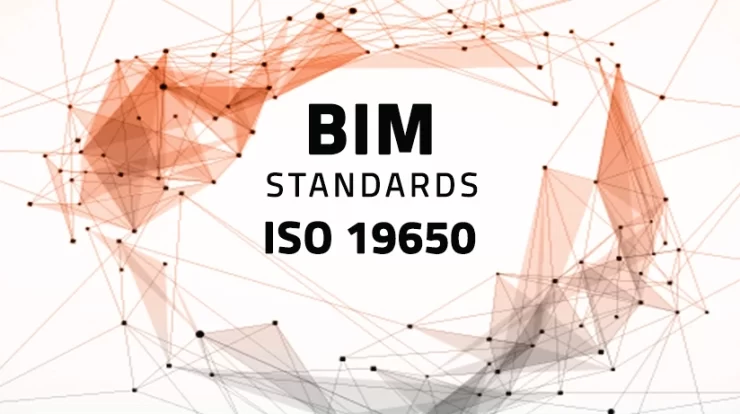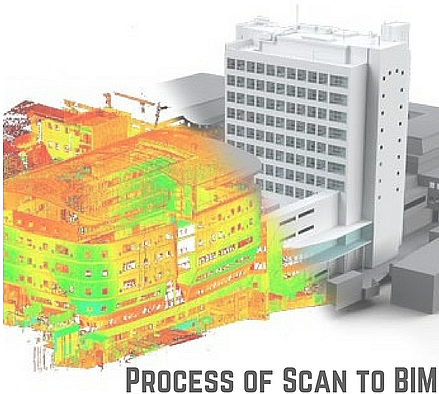
The construction industry stands on the cusp of transformation, and at the forefront of this evolution is BIM. It has emerged as a game-changer, revolutionizing the way projects are conceived, planned, and executed. Its spectrum ranges from enhancing collaboration among stakeholders to substantially reducing errors and elevating overall project efficiency.
As the industry continues to embrace BIM, the imperative for standardized processes becomes increasingly apparent. In this intricate landscape, BIM codes and standards emerge as the linchpin, weaving together the diverse threads of construction projects into a cohesive and interoperable tapestry. At the heart of these standards lies a cornerstone document – ISO 19650.
Understanding BIM Standards
BIM standards serve as a set of guidelines, protocols, and procedures. These streamline the creation, exchange, and utilization of digital information within the built environment. These standards provide a common framework for project teams. It ensures that information is structured, organized, and shared consistently.
The implementation of BIM codes and standards is essential for achieving the full potential of BIM in construction projects. BIM standards encompass various aspects. This includes data exchange, project management, and collaboration protocols.
The overarching goal is to facilitate seamless communication and information flow among all stakeholders involved in a construction project. Adhering to established BIM standards ensures that the digital information remains accurate, up-to-date, and easily accessible throughout the project lifecycle.
| Also Read: What Are BIM Levels
Introduction to ISO 19650
ISO 19650 is a comprehensive international standard that specifically addresses BIM. It provides guidelines for the management of information throughout the entire life cycle of a built asset. The standard consists of two parts: ISO 19650-1 and ISO 19650-2.

ISO 19650-1: Concepts and Principles
ISO 19650-1 serves for effective information management within BIM. This part of the standard lays down the fundamental concepts and principles. That again forms the basis for how digital information is managed throughout the entire life cycle of a construction project.
ISO 19650-1 ensures that information is not only created and exchanged but also managed systematically and cohesively. ISO 19650-1 is the structured approach to information management throughout the project life cycle.
The standard establishes a framework that promotes collaborative working and efficient information exchange. This structured approach ensures that information is organized, consistent, and easily accessible, reducing the likelihood of errors and miscommunications.
ISO 19650-2: Delivery Phase of the Assets
ISO 19650-2 delves into the specifics of information management during the delivery phase of a built asset. This part of the standard outlines the processes and procedures for creating, modifying, and managing information throughout the construction project.
It emphasizes the need for clear documentation, version control, and the exchange of information in a standardized format. ISO 19650-2 ensures that digital information is handled systematically, reducing the risk of errors and improving collaboration among project stakeholders.
Significance of BIM Standards in Project Management
Efficient project management is a cornerstone of successful construction projects, and BIM standards play a crucial role in achieving this.
Ensuring Consistency and Quality
- BIM standards- ISO 19650, establish a common language and methodology for information management. It ensures that all project stakeholders have a standardized approach to creating, sharing, and using digital information.
- Through BIM standards, project teams enhance the quality and accuracy of the information exchanged, reducing f errors and misunderstandings.
Facilitating Collaboration and Interoperability
- Collaboration leads to success in construction projects, and BIM standards promote effective collaboration by defining clear processes for information exchange. ISO 19650 emphasizes interoperability, allowing different software applications and tools to work together.
- This improves communication among project stakeholders and enables the use of specialized software applications.
Implementing BIM Standards in Practice
The successful implementation of BIM standards, such as ISO 19650, requires a concerted effort from all project stakeholders.
Establishing a BIM Execution Plan (BEP)
- A BIM Execution Plan (BEP) serves as a roadmap for the implementation of BIM standards on a specific project. It outlines the roles and responsibilities of each stakeholder, the processes for information exchange, and the overall BIM strategy for the project.
- It ensures that the project team follows a standardized approach to BIM implementation, with the requirements of ISO 19650.
Training and Awareness
- A key aspect of successful BIM implementation is ensuring that all project team members are trained and aware of the BIM standards in use. Training programs should cover the specifics of ISO 19650, including its concepts, principles, and practical applications.
- This helps team members to contribute effectively to the collaborative BIM environment and ensures the project benefits.
BIM Standards and Regulatory Compliance
- In many regions, the use of BIM standards is becoming a regulatory requirement for construction projects. Governments and industry bodies use BIM to enhance the efficiency and sustainability of construction projects.
- ISO 19650, as an international standard, provides a benchmark for regulatory compliance, ensuring that projects meet the necessary standards for information management.
BIM Standards: Challenges
While the adoption of BIM standards brings numerous benefits, it is not without its challenges. The two major challenges which come during the implementation of BIM standards are listed below.
Addressing Implementation Costs
Implementing BIM standards, especially on a large scale, can incur significant upfront costs. These costs include training, software investments, and the development of BIM Execution Plans. However, it’s essential to view these costs as an investment that pays off in improved project efficiency, reduced errors, and long-term cost savings.
Overcoming Resistance to Change
The construction industry has traditionally needed to be faster to embrace change. Implementing BIM standards requires a shift in mindset and work processes. Resistance to change can be a significant barrier, and overcoming this resistance requires effective communication, training, and showcasing the tangible benefits of BIM standards.
| Read More: Why Outsource Your BIM Design?
Conclusion
BIM standards, with ISO 19650 are leading the way in shaping the future of construction projects. It ensures consistency, quality, and collaboration throughout the project life cycle. The implementation of BIM standards requires a strategic approach. It includes the development of BIM Execution Plans, training programs, and a commitment to regulatory compliance.
While challenges exist, the opportunities for improved project outcomes, cost savings, and regulatory alignment make BIM standards a worthwhile endeavor for the construction industry. As we move forward, the continued evolution and refinement of BIM standards will play a pivotal role in advancing the efficiency and sustainability of construction projects worldwide.
FAQs
Q1. What is BIM standards ISO 19650 and BS PAS 1192?
Ans. ISO 19650 and BS PAS 1192 are standards for BIM. ISO 19650 provides a framework for managing information th roughout the life cycle of a built asset, while BS PAS 1192 series outlines specific requirements for collaborative BIM processes. These standards promote consistency and efficiency in construction projects.
Q2. What is the standard of BIM in India?
Ans. ISO 19650 is a global standard for Building Information Modeling (BIM) that defines international codes for effective information management during the design, construction, and maintenance of building assets.
Q3. What is the ISO standard for BIM?
Ans. ISO 19650 is the international standard for BIM. It provides guidelines for the organization and digitization of information related to the entire life cycle of built assets, supporting collaboration and efficient information exchange among stakeholders in the construction and infrastructure industries.



